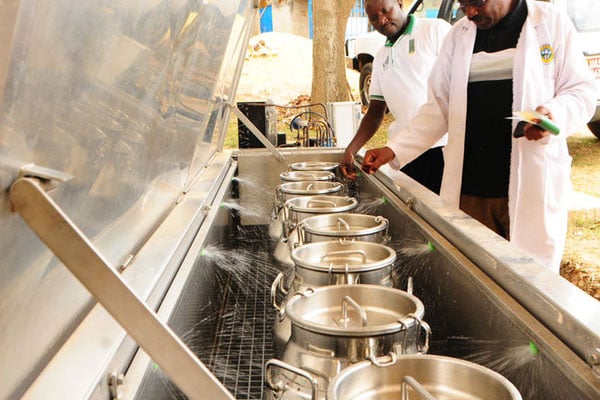Dairy farming is a means to an end to cattle rustling

Milk is one of the items frequently traded in East Africa.
What you need to know:
- It is therefore the right time and opportunity to adopt dairy farming and end cattle rustling once and for all.
Cattle rustling and thefts has occupied national and local news both on radio and paper in the last six months. In Eastern Uganda, specifically Teso sub region, it has kept the local leaders in the districts bordering Karamoja on their toes with security meetings and counter accusations with the Anti-Stock Theft Unit (ASTU) and the UPDF deployed.
In the districts of Karamoja, the disarmament exercise is ongoing with concerted effort of the Minister of State for Karamoja affairs. Meanwhile the local communities in Katakwi, Kapelebyong, Amuria, Kumi and Kween are not sleeping due to the insecurity caused by the vice. The Karamojong cattle rustlers and thieves target community kraals and loose animals grazing in communal grounds.
The local cows, mainly the short-horned Zebu, have rustled since the onset of tribal cattle thefts in the early 1900s. Armed with guns and arrows, any resistance and detection has led to loss of lives. According to local reports, more than 84 people have been injured and at least 46 people killed since the beginning of 2022.
In Teso and Karamoja, the main hotspots of cattle rustling, the local Zebu is now a source of both food insecurity and armed conflict both reversing on positive gains made on livelihoods resilience. The local animals targeted for rustling provide only (0.5-3) litres of milk per day, barely enough to sustain a diet for an average household of six members per day. On the other hand, it is easy to be rustled or stolen given its agility to cover long distances. It can also thrive in the wilderness hidden from the prying eyes of security.
The local animals that are predominant in Northern and Eastern Uganda are therefore a perfect fit for both random and coordinated thefts in a region. Being the source of livelihoods, they have kept households in perpetual abject poverty.
Dairy farming can eradicate the vice in the Northern and Eastern parts of the country. Dairy animals especially the Jerseys, Friesians crosses and Guernsey’s are not susceptible to cattle thefts. They are very tender to travel long distances, they are also closely monitored by the household members. Furthermore, dairy breeds cannot be rushed, typical of what the cattle rustler detest to avoid being intercepted and arrested.
In my interaction with the LC V Chairperson of Katakwi, he was impressed with the choice of the Karamojong cattle rustlers of recent. Late January, a group of identified cattle rustlers descended on a Kraal of 14 animals with five Friesian crosses in Usuk sub county, the dairy animals were left behind to the shock of the owners and the local leaders.
Meanwhile, in Napak District stolen dairy animals failed to move after a short distance and to the disappointment of the Rustlers they were only cut and left there. Dairy animals once adopted in the areas bordering Karamoja and Karamoja inclusive provide between 21-25 litres of milk daily enough to feed the entire household and balance sold to provide daily income.
This income is saved daily at the Milk Collection Centre and withdrawn at the end of the month to facilitate other expenses. Under the Parish Development Model, daily incomes from milk swiftly enrolls a household to a money economy thus eradicating poverty perpetually caused by the local animals.
The government through Dairy Development Authority (DDA), has promoted dairy in the North and Eastern Uganda with critical investments in milk collection, storage and marketing infrastructure. It has rehabilitated a number of defunct Milk Collection Centres in Teso, Lango and Acholi. Katakwi Milk Collection Centre is the latest and provides an opportunity to thwart cattle rustling and thefts in the district.
DDA/ NAADS also supported Kaabong Livestock Cooperative Society with a 2000ltr capacity cooler to enhance bulking and group milk marketing and also encourage shift from Local to Improved dairy breeds of cattle. Let livestock farming households in the sub counties of Magoro, Ngariam, Toroma, Ongongoja and Usuk take a shot in dairying and the century old cattle thefts and rustling by the neighboring Karamojong will become history. The local animals can be converted to dairy animals in the ratio of three to one in the short term meanwhile Artificial Insemination and community breeding in the medium and long-term.
DDA in collaboration with NAGRC & DB and NARO studied adaptability of the dairy breeds to Northern and North Eastern milksheds and zeroed on the Jersey and the Guernsey which are all available for scaling up.
It is therefore the right time and opportunity to adopt dairy farming and end cattle rustling once and for all.
Kenneth Otikal, Statistician/Economist, Population Scientist and M&E Specialist.



